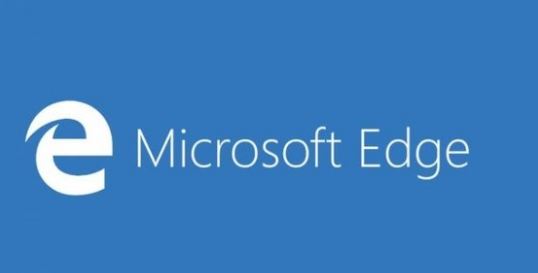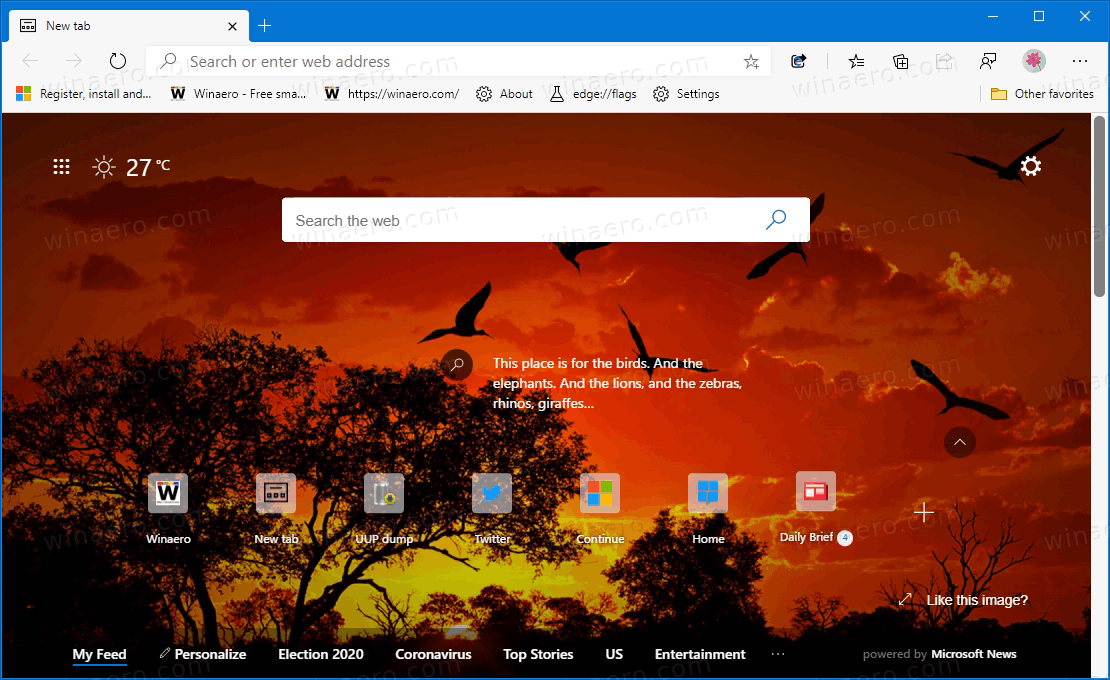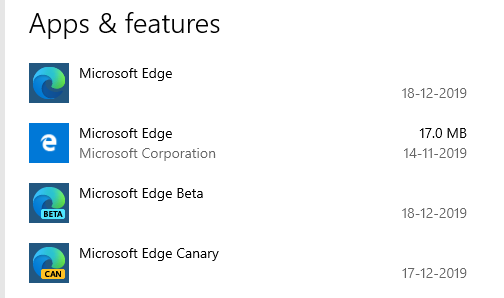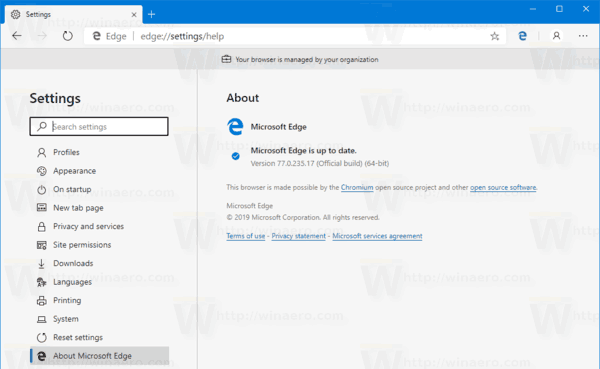- Edge Chromium Stable Release Date
- What Is Edge Chromium
- Edge Chromium Stable Release
- Edge Chromium Stable Build
 -->
-->This article describes the release cadence and anticipated release schedule for Microsoft Edge.
Release cadence
Microsoft provides four options, called channels, to manage how often Microsoft Edge is updated with new features. The Microsoft Edge team plans to push public updates to the Beta and Stable channels every six weeks. For more information about our channels, their release cycle, and support levels, see the Channel overview.
Microsoft Edge is based on Chromium, the open-source browser engine developed (though not exclusively) by Google. Any website, web app, or web service that works in any Chromium-based browser, such as Google Chrome, will work in Edge too. As Microsoft’s Edge web browser is now based on Chromium, it follows suit that this would affect Edge, too, and today the Edge Dev team confirmed that deduction: In light of the current.
Note
Starting with Stable channel version 94, Microsoft Edge is moving to a 4-week major release cycle cadence. However, we recognize that enterprise customers who manage complex environments need more time to plan and test Microsoft Edge updates. To help our enterprise customers who need an extended timeline to manage updates, Microsoft Edge will offer an Extended Stable option aligned to a longer, 8-week major release cycle; this option will only be available for customers with managed environments.
Release schedule
The following table lists the planned release dates for the Beta and Stable channels.

Note
Release dates are approximate and might vary based on build status.
Microsoft Edge releases
The following table only tracks and provides information for major releases in both channels.
| Version | Release status | Beta Channel Release week | Stable Channel Release week |
|---|---|---|---|
| 88 | Released Version | 09-Dec-2020 88.0.705.18 | 21-Jan-2021 88.0.705.50 |
| 89 | Released Version | 03-Feb-2021 89.0.774.18 | 04-Mar-2021 89.0.774.45 |
| 90 | Released Version | 16-Mar-2021 90.0.818.8 | Week of 15-Apr-2021 90.0.818.39 |
| 91 | Target release | Week of 27-Apr-2021 | Week of 27-May-2021 |
| 92 | Target release | Week of 08-Jun-2021 | Week of 22-Jul-2021 |
| 93 | Target release | Week of 03-Aug-2021 | Week of 02-Sep-2021 |
| 94 | Target release | Week of 01-Sep-2021 | Week of 23-Sep-2021 |
| 95 | Target release | Week of 28-Sep-2021 | Week of 21-Oct-2021 |
| 96 | Target release | Week of 26-Oct-2021 | Week of 18-Nov-2021 |
| 97 | Target release | Week of 30-Nov-2021 | Week of 06-Jan-2022 |
Release Process
The trigger for Beta and Stable major releases is an equivalent Chromium release.
Progressive rollouts
The date reference (Released/Release week) for the Stable channel references the beginning of the progressive roll out.
We use a progressive rollout model which means that new release availability for any given device could be staggered over upcoming days. For more information, see Progressive rollouts for Microsoft Edge Stable Channel.
See also
Microsoft Edge for Linux is now a thing, so in this post we show you how to install the browser on Ubuntu, Linux Mint, and any related Linux distributions.
In guide we show you how to install Microsoft Edge on Ubuntu (or any Ubuntu-based Linux distribution, like Linux Mint) in two ways: graphical (GUI) method, and command line (CLI) method.

It doesn’t matter which method you choose as you will download and install the exact same version of Microsoft’s new-fangled browser. Plus, both methods set things up so that you get future updates as and when they’re released, automatically.
Microsoft Edge is based on Chromium, the open-source browser engine developed (though not exclusively) by Google. Any website, web app, or web service that works in any Chromium-based browser, such as Google Chrome, will work in Edge too.
Even better: you can install Chrome extensions in Edge too (though Microsoft maintains its own extension hub for browser add-ons).
Read our hands on with Edge for Linux development builds for a broader overview on what works, what doesn’t, and what you should keep in mind if you plan to use it otherwise.
How to Install Edge Browser on Ubuntu
Keep in mind that Microsoft Edge for Linux is in developer preview. It is not “stable”. It is not even a beta. Some features (like browser sync) are currently unsupported on Linux. Are there bugs? Yup. Will it crash? Quite possibly!
Please note: this article is about how to install Edge on Ubuntu, not why you should install it. You decide which software you use on your system. And if you don’t want Edge? That’s fine! But you probably won’t be reading a “how to” guide on the topic!
Graphical/GUI way
Installing Edge using a graphical user interface is easy as Microsoft provide official installer packages for Ubuntu and Fedora-based distros. You can use these builds to install the browser on your system using your distribution’s package manager.
Edge Chromium Stable Release Date
1.Go to Microsoft Edge Download Page
In a web browser open the official Microsoft Edge download page. There you’ll find two builds for Linux. Chose the ‘Linux (.deb)’ option for Ubuntu.
2. Download Edge for Linux
Choose to save the .deb package to your Downloads folder (or any other. directory you can access easily). If you’re using Firefox you can check the “Save File” option to do this.
3. Double click on the installer
Let the download complete then use your file manager to find the Edge Linux installer. Finally, double-click on the saved file to start installing and follow the on-screen prompts.
When you install using the official installer the Microsoft Edge repository is added to your system’s list of software sources. You can upgrade to new versions of the browser as they’re released using the regular Software Updater tool.
4. Open Microsoft Edge.
Let the install finish up then open the browser from the Applications grid (or whatever app menu, launcher, etc you use on your system.
Terminal/CLI way
What Is Edge Chromium
Prefer to install software from the command line? We got you covered. Just copy/paste the following commands in to your terminal emulator of choice.
First: the set-up script. This adds the Microsoft Edge repo to your system, and imports the Microsoft GPG key to authenticate packages (so that you can be sure they are what they say they are):
Second step: run this command to actually install Microsoft Edge:
Once done, launch the browser from your favourite app launcher, or run microsoft-edge-dev from a command prompt.
How to Uninstall Edge
So you installed Edge. Grand. And you try it out. Awesome. But what happens if you want to remove it? Well, it’s easy to uninstall Microsoft Edge using the command line.

Just open a new Terminal window and run:
Alternatively you can open the Ubuntu Software app, search for ‘edge’ by name, click the result, and hit the ‘remove’ button.
Simple!
Summary
That’s it; you learned how to install Microsoft Edge browser on Ubuntu, Linux Mint, and other distributions in this article. All that’s left for you to do now is to open the browser up and start surfing the web!
It remains to be seen if Edge will find a big enough audience on Linux to sustain itself. The browser is up against stiff competition from the likes of Google Chrome, Mozilla Firefox, and Vivaldi.
Edge Chromium Stable Release

Edge Chromium Stable Build
While most Linux users will shudder at the thought of using it, I think it’s great to have the choice of using Edge on Linux.
